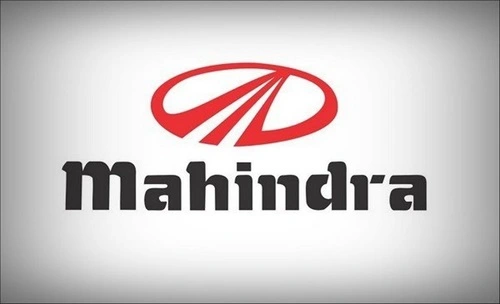As a cornerstone of India’s automotive and diversified industrial sectors, Mahindra and Mahindra (M&M) holds a unique position in the domestic and international markets. Founded in 1945, Mahindra has expanded its footprint across various industries, including automotive, agriculture, aerospace, defense, and technology. This article delves into a detailed SWOT (Strengths, Weaknesses, Opportunities, Threats) analysis of Mahindra and Mahindra, assessing its current market scenario and future outlook.

Strengths
1. Dominance in Utility Vehicles (UV) and Farm Equipment:
Mahindra is a pioneer in utility vehicles and tractors. Its leadership in these segments provides a competitive edge. As of the latest data, Mahindra enjoys a robust share of the Indian UV market, leveraging its reputation for rugged, durable vehicles, especially suited for Indian roads. The Mahindra Thar, Scorpio, and Bolero have built a loyal customer base, cementing Mahindra’s position as a leader in UVs. Additionally, Mahindra’s tractors command a sizable market share both in India and internationally, driven by the strong brand reputation of Mahindra Tractors in the agriculture sector.
2. Strong Brand Equity and Trust:
Over the years, Mahindra has built a strong brand name associated with trust, reliability, and innovation. The group’s wide-ranging business portfolio, including automotive, aerospace, and technology solutions, has positioned it as a trusted name in India’s industrial landscape. This brand trust benefits the company across its diverse sectors, especially in rural areas where its tractors and commercial vehicles are widely trusted.
3. Innovation and R&D Investment:
Mahindra’s significant investment in R&D has facilitated the development of products tailored for diverse market needs. For example, Mahindra’s research center, Mahindra Research Valley in Chennai, is a hub for advanced automotive engineering and innovation. Recently, Mahindra has been focusing on electric vehicles (EVs) and green technology, aligning with global trends toward sustainable transportation.
4. Diversified Portfolio:
Mahindra’s diversified portfolio across various sectors insulates it from risks associated with reliance on a single industry. In addition to automotive and farm equipment, Mahindra has strong interests in information technology (Tech Mahindra), financial services, hospitality, aerospace, and real estate. This diversification reduces its vulnerability to sector-specific downturns and provides multiple revenue streams.
Weaknesses
1. Dependence on the Domestic Market:
Despite its international presence, Mahindra remains heavily dependent on the Indian market for revenue. Economic slowdown or regulatory changes in India could have a substantial impact on the company’s financial performance. Furthermore, Mahindra’s heavy reliance on the rural economy for its tractor and UV sales ties its performance to the volatile agricultural sector, which can be affected by monsoon variability and other environmental factors.
2. Underperformance in the Passenger Car Segment:
While Mahindra excels in utility vehicles, it has struggled to establish a stronghold in the passenger car segment compared to competitors like Maruti Suzuki and Hyundai. The launch of models such as the Mahindra Verito met with limited success, highlighting the company’s struggle to resonate with the urban, compact passenger car market. Mahindra’s primary strength remains in SUVs and commercial vehicles, which could hinder its growth potential in the burgeoning compact car segment.
3. Slow Transition to Electric Vehicles (EVs):
Although Mahindra was an early mover in the EV space with the acquisition of Reva Electric Car Company, it has faced challenges in gaining a foothold. The slow transition and limited EV model offerings have impacted Mahindra’s standing in the fast-evolving EV market, where competitors like Tata Motors have made rapid strides. To remain competitive, Mahindra will need to accelerate its EV strategy to keep pace with changing consumer preferences and government regulations pushing for clean energy adoption.
Opportunities
1. Growth in the Electric Vehicle Market:
With India’s National Electric Mobility Mission Plan 2020 and the ongoing shift towards cleaner energy, the demand for EVs is set to rise. This presents an opportunity for Mahindra to leverage its early investments in electric mobility and expand its EV portfolio. The recent launch of the Mahindra XUV400 EV is a step in this direction, and further innovation in this space could boost Mahindra’s position as a key player in the Indian EV market.
2. Expanding Global Reach:
Mahindra has a growing footprint in international markets, especially in the US and Africa. Its acquisition of SsangYong in South Korea, coupled with joint ventures in the US, positions it for global expansion. By capitalizing on its existing strengths and introducing affordable and durable vehicles tailored to emerging markets, Mahindra could further strengthen its global presence, especially in the Asia-Pacific, Middle East, and African regions.
3. Rising Demand in Agricultural Mechanization:
The Indian government’s focus on modernizing agriculture presents significant growth potential for Mahindra’s farm equipment segment. Mahindra can benefit from the shift toward mechanized farming by introducing technologically advanced, fuel-efficient tractors. The company’s initiatives, like the Krishi Samadhan platform, which offers farming solutions, also position Mahindra as a holistic provider of agricultural support, enhancing its appeal to India’s agrarian economy.
4. Advancements in Technology and Digital Transformation:
With the digital transformation underway across industries, Mahindra can leverage Tech Mahindra’s expertise to digitize operations across its subsidiaries, improving efficiency and customer experience. The integration of IoT and AI in vehicles, automated solutions in manufacturing, and digital services in financial and real estate segments offer immense opportunities for the company to innovate and stay competitive.
Threats
1. Intense Competition in the Automotive Sector:
The Indian automotive sector is highly competitive, with global giants like Hyundai, Maruti Suzuki, and Tata Motors, along with new entrants like MG Motors and Kia. The competitive landscape exerts pressure on Mahindra to continually innovate and stay relevant. With competitors actively launching new models and expanding their presence, Mahindra faces the challenge of maintaining its market share, especially in the utility vehicle segment.
2. Regulatory and Environmental Challenges:
The automotive industry is increasingly regulated, with stringent emission norms and safety regulations being enforced worldwide. The transition to BS6 norms, for instance, posed a cost burden on Mahindra, necessitating significant adjustments to vehicle design and manufacturing processes. Similarly, the government’s push for EVs, while an opportunity, could also be a threat if Mahindra fails to accelerate its transition to sustainable solutions.
3. Economic Slowdown and Currency Fluctuations:
Global and domestic economic slowdowns can impact Mahindra’s revenue, particularly in segments dependent on discretionary spending. Additionally, as Mahindra operates in international markets, currency fluctuations can affect profitability. Rising inflation and interest rates may also increase costs, affecting consumer spending and reducing vehicle demand.
4. Technological Disruption:
The rapid evolution of automotive technology poses a threat to companies that fail to keep pace. Autonomous vehicles, advanced driver-assistance systems (ADAS), and connected car solutions are reshaping the automotive industry. Mahindra must invest heavily in these technologies to avoid being left behind, as the consumer demand for tech-integrated vehicles rises.
Future Outlook
The future outlook for Mahindra and Mahindra appears promising but requires a strategic pivot towards innovation and adaptability. To capitalize on the rising EV market, Mahindra must enhance its EV portfolio, integrating features that cater to environmentally conscious consumers. The company’s ongoing R&D investments will likely be instrumental in this shift.
Furthermore, leveraging Tech Mahindra’s digital expertise to integrate smart technology into vehicles, and exploring IoT-based solutions for agriculture, could position Mahindra as a pioneer in connected technology. Strengthening its global footprint and expanding into emerging markets with adaptable models will enable Mahindra to capitalize on the rising demand for affordable vehicles and farm equipment.
In conclusion, Mahindra and Mahindra’s strengths in UVs, agricultural machinery, and diversified interests give it a solid foundation, but it must navigate intense competition, regulatory hurdles, and rapid technological shifts to sustain its growth. By strategically addressing its weaknesses and capitalizing on opportunities, Mahindra can remain a resilient player in India’s dynamic business landscape.

